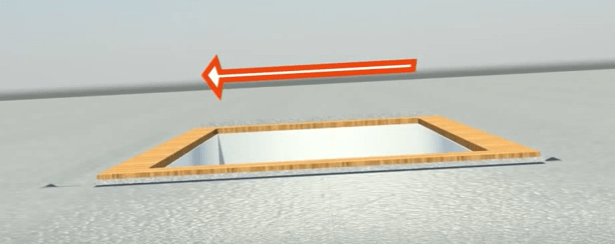
How do I Measure Roof Pitch? The Roof Maker Guide
How do I measure roof pitch?
Before you get your rooflight installed, it’s important you measure your roof pitch. Roof pitch simply means the steepness or slope of your roof.
When you’re measuring roof pitch you’re working out the ‘run’, which is the horizontal distance between the peak of the roof and the wall, and the ‘rise’, which is the height of the peak above the wall. Sometimes you might even measure the ‘span’, which refers to the distance between the walls.
If you’re ready to measure roof pitch, there are a couple of ways to do this – both of which are fairly simple.
Tools required to measure a roof pitch
- Carpenter’s level – a straight bar of metal with a spirit level in it.
- Tape measure
- Calculator (or a good head for maths!)
Measuring from the rafters
As there’s no roofing material here to cause an uneven surface, measuring from the rafters should give you a very accurate measurement. You can either take the roof pitch measurement from the rafter in the attic, the overhang of a rafter in the roof, or even a barge rafter at the side of the gable.
Position one end of the carpenter’s level against the underside of the rafter, and adjust until the bubble is centred between the two lines.
You’ll now need to find the 12-inch/30cm mark on the carpenter’s level. If yours doesn’t have markings then don’t worry: just measure it with a tape measure and draw on the 12-inch mark.
Now you need to measure the vertical distance from the carpenter’s level to rafter. When you measure the distance from the 12-inch/30cm mark to the underside of the rafter, make sure your carpenter’s level stays in position.
Now you can work out your roof pitch, which is the ratio of rise to run.
Measuring from the roof surface
The alternative option to measuring your roof pitch in the rafters is to measure it on the roof surface. Be careful here and make sure that it’s safe to walk on, you don’t want to injure yourself!
Once you’re safely on the roof, place your carpenter’s level against the roof and adjust until the bubble is between the two lines. If your roof is particularly bumpy, then it’s worthwhile laying a flat board down so that you can get an accurate reading.
You’ll then need to measure the vertical distance from roof to level, holding the 0-mark of the tape measure against the roof and extending upwards so that it’s perpendicular to the carpenter’s level. Once the tape measure has reached the 12-inch/30cm mark, write down the vertical distance measurement.
Now you can work out the pitch slope as rise over run.
If you don’t have a calculator to hand, then a quick Google search will bring up loads of roof pitch calculators that you can input your measurements into.
For further advice, talk to the experts.
If you have further questions about how to measure roof pitch, or anything else you have read here, Roof Maker’s expert team will be happy to advise you. Just call us on 0116 269 6297.
